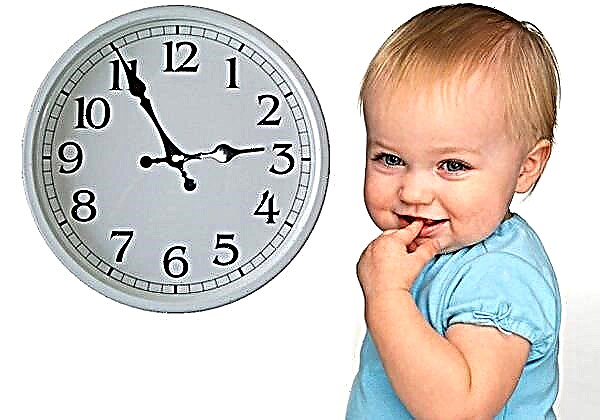
When feeding, which is called artificial, breast milk is completely or 2/3 replaced with milk formula.
Features and reasons
The "artificial" child is fed from birth six to seven times a day - feeding is carried out at intervals of 3-3.5 hours.
It is necessary to introduce adapted nutrition into the diet of the crumbs instead of mother's milk in such cases:
- Childbirth was very difficult and it is difficult for a woman to recuperate after them.
- There is not enough milk in the breasts or it is absent.
- A woman has to take medications that are vital for her, cannot be replaced and cannot be combined with breastfeeding.
- Mom developed an infectious disease.
- Mom is temporarily absent for a long time and there is no way to store her expressed milk.

Minuses
Often mothers do not fully understand how the transition to infant formula turns out. It happens, for the sake of her convenience, the mother donates substances so necessary for the baby that are only in breast milk.
Before you go to buy the formula, you should find out about the disadvantages of this type of feeding:
- Allergies and colds occur more often in artificial children.
- Bottles should be sterilized at all times.
- The baby often has regurgitation and colic associated with excessive swallowing of air.
- On trips, you have to take a large bag in which you need to put bottles, mixture and other items.
- Often you have to change several variants of the mixture in search of a suitable one.
- Such feeding requires certain financial expenses.
Are there any advantages?
The obvious benefits of formula feeding your baby are:
- Another person can feed the baby.
- It is always known how much the child ate during the feeding.
- It is easy to determine the cause of the allergy.
- Fewer feedings due to longer digestion.

Free artificial feeding
Supporters of this type of feeding base their attitude on the different nutritional needs of the child during the day. However, even they follow a certain schedule, deviating from it by 30-60 minutes.
If you have chosen this type of feeding for a child, doctors recommend feeding the baby at certain hours, and giving the amount of food as desired. To do this, pour a little more mixture into the bottle - by 20-30 milliliters.

Cow's milk or mixture: Komarovsky's opinion
The famous doctor reminds that even the best and most adapted formulas are still inferior to human milk. And if there is at least a minimal opportunity to restore lactation, it should not be missed. In addition, Komarovsky clarifies that even the highest quality cow or goat milk will always be inferior to adapted milk formula.
Due to the fact that in the last 20-30 years women are less and less likely to feed babies with cow's milk, and use adapted formulas, the number of problems in children under 12 months old has decreased thousands of times. So, if a woman, for some reason, cannot breastfeed her baby, she should never make a mistake in the form of transferring the crumbs to feeding with cow's milk. Even if her grandmother calls the mixture a chemical powder.
It is undesirable to give cow's milk in any form to babies under one year old, and from one to three years, milk from a cow or goat should be given in moderation (up to 200-400 ml per day). Such restrictions are associated with an increased amount of phosphorus and calcium in cow and goat milk, which the kidneys of children under 3 years of age cannot handle. This poses a danger to the normal development of the baby's bones.

Separately, Komarovsky mentions the possibility of using donor milk - breast milk received from another woman. Such milk loses its advantages when boiled, and it is not recommended not to boil it, because one cannot be completely sure of the safety of this product. At the same time, such milk also has all the disadvantages of artificial feeding - they buy it, boil it, and bring it to a certain temperature. Komarovsky is sure that such milk should be used only in cases of intolerance to cow's milk. Otherwise, an adapted mixture will be a safer, cheaper and more convenient option.
If we are talking about a wet nurse who will feed your child along with her child, this is a completely different question. If you are confident in the health of the wet nurse, this is a very good option.
Should I give the formula to a child over 1 year old?
The formula for feeding at any age is better than cow's milk. It all depends on financial capabilities:
- Up to a year, the child must be fed exclusively with a mixture, no cow's milk;
- From one to 3 years - the need is less acute, but the introduction of the mixture into the diet of the crumbs is desirable;
- After 3 years, everything depends on your desires, the need to use mixtures disappears.
We advise you to watch the program "School of Doctor Komarovsky" about artificial feeding.
What you need for feeding
Bottle
They need 4-6 pieces. The volume of the bottles is 125 ml and 250 ml. Glass bottles are less preferable as they risk breaking.
Plastic bottles are not only traditional, but also with replaceable liners. This disposable liner ensures an even flow of milk and prevents air from being swallowed. You can also find bottles on sale that show the temperature of the mixture in them.
The presence of a wide neck in the bottle will help to conveniently pour the mixture without losing it. The presence of a cover will protect the teat from contamination. If the bottle expands downwards, this shape will ensure its stability. If you buy a bottle that is easy for your baby to hold (with a hole in the middle), you will also need a brush that has a bend at the end to take care of it.

Nipples
Available in silicone and latex. Latex nipples become cloudy and cracked over time, which necessitates regular replacement. Silicone products are devoid of taste and smell, they perfectly retain their shape and do not soften. It is easier to wash silicone nipples.
The shape of the nipple is drop-shaped - resembling the nipple of a woman's breast. Such a nipple takes up little space in the mouth, so it does not cause deformation of the palate and teeth. Orthodontic shaped nipples are also sold to match the baby's mouth structure. These products help to shape the correct bite.

When buying a pacifier, also pay attention to her:
- size - products for newborns are not suitable for older children,
- elasticity,
- the size of the holes - the mixture should flow out in drops,
- number of holes - for newborns, buy a nipple with one or three holes, and for children older than six months, it is better to choose a nipple that can change the amount of fluid released.
Sometimes you have to try several types of nipples to find the one that suits your baby. If the baby is prone to gas and hiccups, it is recommended to buy a nipple with a valve that prevents air from entering the bottle.
Additional items are brushes (they are for both bottles and nipples) and a heater.
How to prepare the mixture
To prepare the mixture, take:
- A bottle with a nipple;
- Measuring mug;
- Funnel;
- A spoon with a long handle.
You do not need to boil the water for the mixture if you use specialized water for children. Tap water must be boiled.
The mixture should be prepared right before you give it to your baby. This can be done:
- In a bottle. After boiling water and filling the bottle with the required volume, take the mixture using a measuring spoon. After pouring it into the bottle, close it and shake well until completely dissolved.
- In a measuring cup. After boiling water and filling the measuring cup with the required volume, take it with a measuring spoon and pour it into the mug. After mixing well until the powder dissolves, pour the mixture into a bottle using a funnel.
Before you start feeding, you need to make sure that the temperature of the mixture does not exceed +37 degrees. Put the milk mixture on your palm: it should be a little warm.

With artificial feeding, every mom needs to know how to bottle feed her baby properly. Read about this in another article.
Sterilizing baby bottles
When feeding a newborn, bottles, teats, and other equipment should be sterilized periodically. This is done about once a day. After cleaning the fixtures from the remnants of the mixture with a brush and clean water, they are sent to boil.
Long-term sterilization is not necessary for children over 1 month old. A simple rinsing of the bottle and teat with boiling water or washing with soapy water followed by a thorough rinsing is enough. In addition, too frequent and long sterilization can play a disservice in the formation of the baby's immunity. For example, a similar situation: growing a plant in greenhouse conditions and then sending it to a normal environment. The child, like this plant, will be sick a lot.
A device such as a sterilizer is designed to save time and effort when artificial feeding.

If not, you can sterilize nipples, bottles and other items in a large saucepan. The items are rinsed and then boiled for 15-20 minutes and cooled directly in the pan, then laid out on a clean towel to remove water.
Teats and bottles can be processed in an electric steam sterilizer. A steam sterilizer is also available, which is used in a microwave oven.
Storing the mixture
You can prepare the mixture in advance, but in this case it must be stored in the refrigerator for no longer than 24 hours. This mixture is heated in hot water. The mixture should be stored at room temperature for a maximum of 2 hours.



